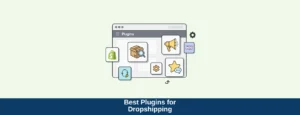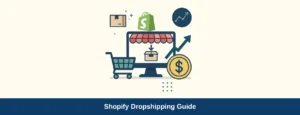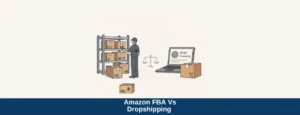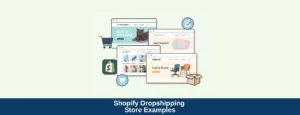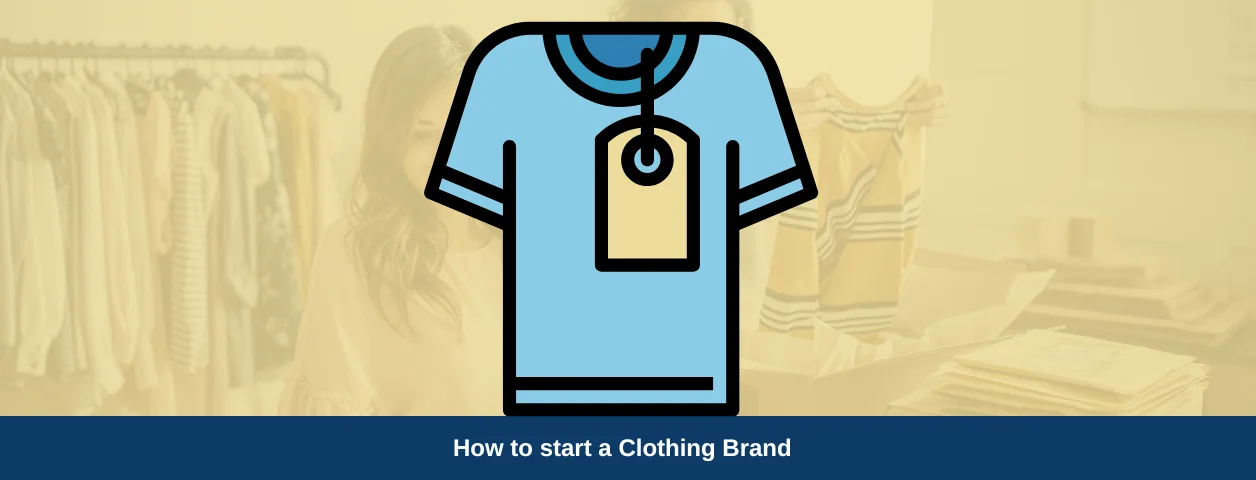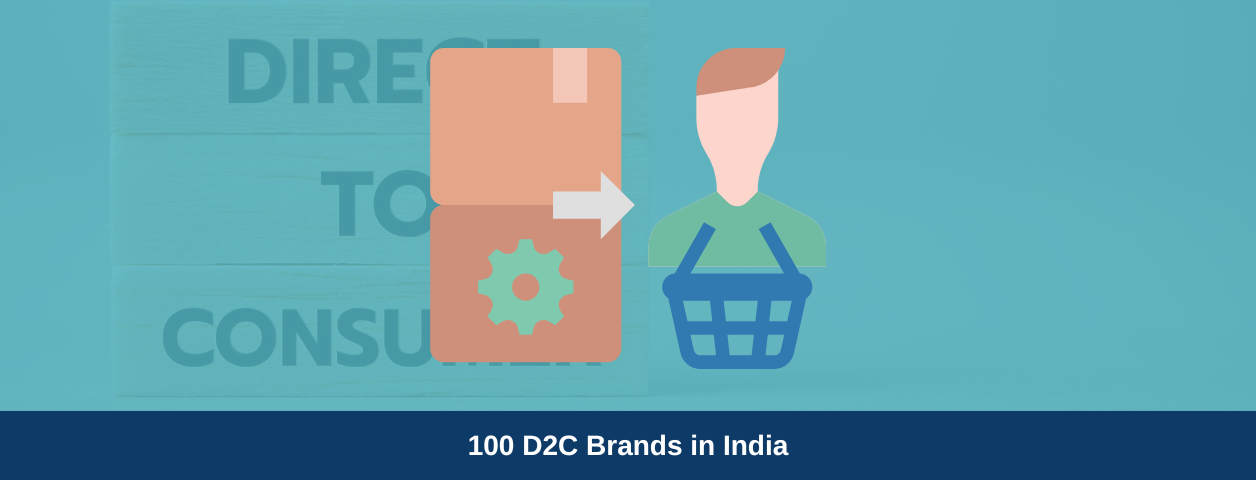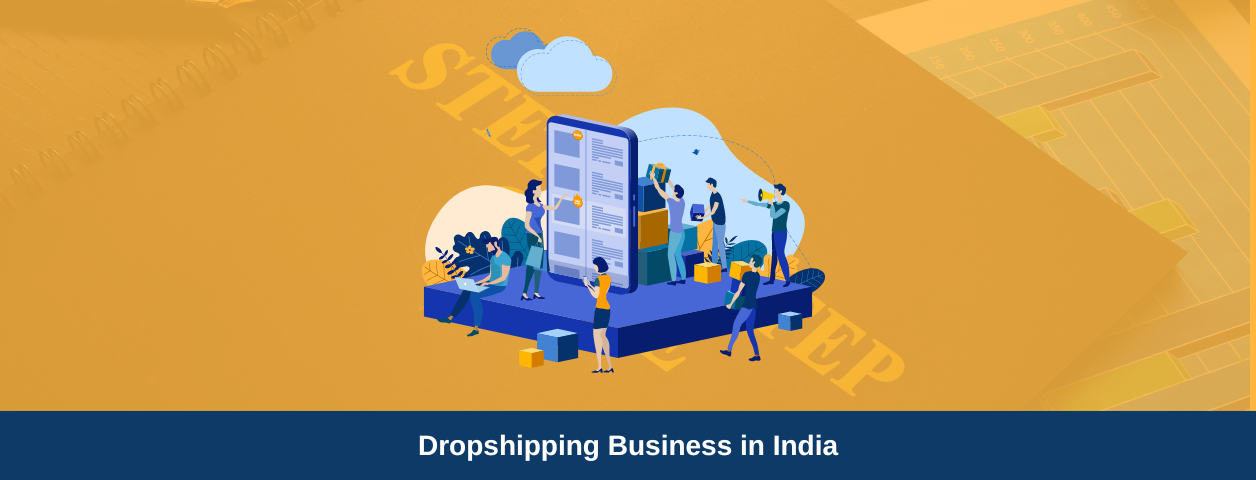Are you planning to launch your clothing business in 2025 but confused about where to start? To many people’s surprise, instead of opening a one-stop clothing brand, narrowing down your targeted audience can lead to better growth opportunities.
But which niches should you target to reap the maximum profits? Segments like custom POD, plus size, athleisure, and the others listed here can help you grow your clothing business the fastest.
So keep reading to know about their budget, pros and cons, and basic execution plan.
The most successful clothing business ideas to start in 2025: Our verdict
Before we dive deep, take a sneak peek at the categories.
- Easiest clothing business to start from home with low investment:
- Custom POD
- Corporate clothing
- Most stable clothing business idea
- Athleisure wear
- Kidswear
- Sustainable clothing line
- Clothing business with growing markets
- Plus-size fashion
- Limited edition designer clothes
How we selected these clothing business ideas
There are endless clothing business ideas to choose from and without fixed parameters, it would have been difficult to suggest any.
Here are the five factors that we considered before suggesting these business ideas to you.
1. Online business opportunity
If 2020 has taught us anything, it is that your business needs to be online to make it through a global pandemic. So no matter what type of clothing business you have, it has to have the flexibility to operate online.
All the clothing business ideas that we listed are online-friendly and can easily be managed online. For example, custom POD is such a clothing business idea that you can completely operate online where you don’t even need to have an inventory space.
On the other hand, clothing business ideas like opening a designer boutique can be challenging to operate completely online.
2. Low-medium investment required
We are assuming this is your first business venture, and in that case, the lower the investment, the better it is for you.
If executed correctly, the majority of the business ideas on this list can be started with a budget of ₹15,000 to ₹30,000 or even less.
3. Requires little to no inventory
Inventory costs make up a huge part of your initial as well as recurring expenses. As we mentioned before, we aim to suggest you low-cost business ideas. Therefore, most of our clothing business ideas require little to no inventory.
👉 Learn more about the actual cost of print on demand business.
4. Require little experience and training
In 2025 you should be able to start your clothing business regardless of your experience and expertise. This is why all of our suggestions in this list require little to no experience and training.
Plus, we have also mentioned steps to execute the business, so you get a basic plan to start with.
5. High profitability
Many clothing business ideas might require you to make a heavy initial investment and give very little ROI. For example, in the case of luxury clothing businesses high price tags, the cost of materials, craftsmanship, and brand marketing can significantly eat into profits.
Therefore we have only included business ideas that can be highly profitable and help you make money from the very beginning.
In the next section, we have made three board categories and elaborated on the business ideas under them.
Easiest clothing business to start from home with low investment
Here are the two categories of clothing businesses that you can start with a nominal investment and without any inventory.
1. Custom Print-on-demand (POD)
What this business is about: Custom POD involves creating and selling custom-designed apparel, such as t-shirts, hoodies, and accessories, with designs printed on them based on customer orders.
Here’s the search demand growth for the term ‘print on demand’ in the last 5 years (280% growth):
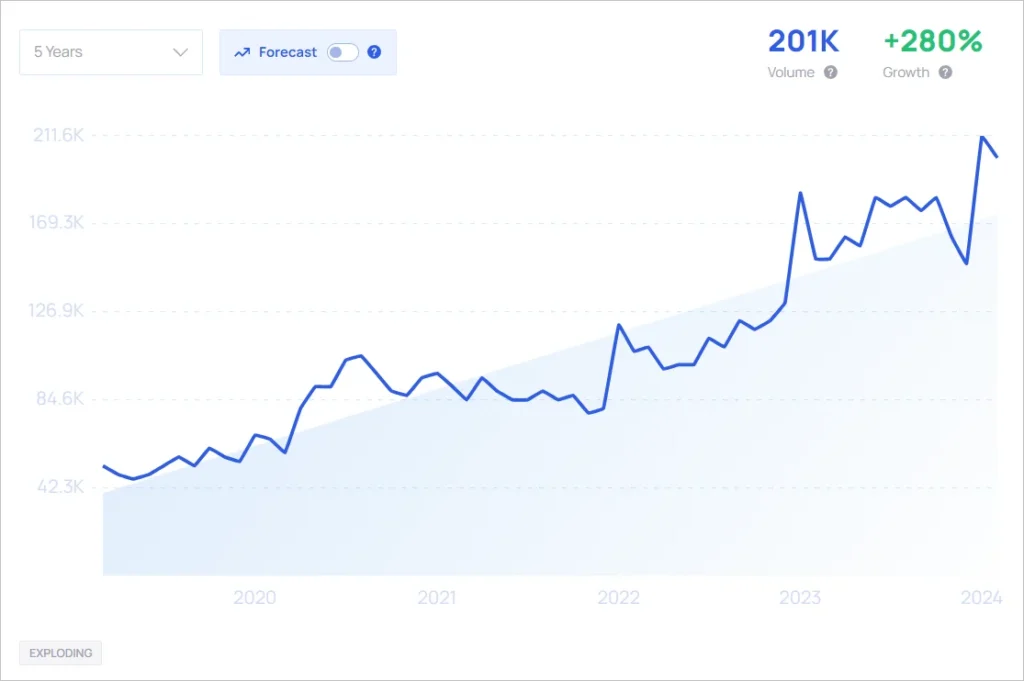
Budget required to start: Approximately ₹30,000 – ₹2,00,000 or you can start at even less with Qikink. Learn about the Custom POD business investment.
Pros:
Low initial investment and overhead costs.
Offers unique and personalized products, attracting niche markets.
No need to hold inventory, as products are printed only upon customer orders.
Cons:
- High competition in the market requires strong marketing efforts.
Quality control and timely delivery are crucial for customer satisfaction.
How to execute:
- Research and select a reliable POD platform like Qikink.
- Create or outsource unique and trendy designs for your print on demand products.
- Set up an online store on platforms like Shopify or Etsy.
- Market your products through social media, influencer collaborations, and targeted advertising.
- Monitor customer feedback and adapt your designs and marketing strategies accordingly.
NOTE:
With Qikink, you can integrate Shopify and Woocommerce with your online clothing store and start selling customized print-on-demand tshirts to your customers.
If you want to start your clothing dropshipping business, find the best dropshipping business ideas to get inspired from.
2. Corporate Clothing
What this business is about: In a corporate clothing business you can create and supply customized apparel and accessories, such as t-shirts, polo shirts, caps, and jackets, with company logos and branding for businesses, events, or promotional purposes.
Budget required to start: Approximately ₹ 80,000 – ₹3,00,000.
Pros:
- Targeting corporate clients can lead to larger and more consistent orders.
- Potential for long-term partnerships and repeat business.
- Higher profit margins compared to standard retail clothing due to bulk orders.
Cons:
- Requires establishing relationships with corporate clients, which may take time and effort.
- Quality control is crucial for maintaining brand reputation.
👉 For bulk order of clothing items, you can check out Qikink’s custom bulk printing service with customization options availability.
How to execute:
- Research the local market and identify potential corporate clients or industries that require branded clothing.
- Invest in equipment such as screen printing machines or embroidery machines. Or you can skip all the hassle and partner with a POD business like Qikink.
- Develop a portfolio showcasing sample designs and product options for corporate clients.
- Network and pitch your services to businesses, organizations, and event planners through cold calls, emails, and in-person meetings.
- Provide excellent customer service, timely delivery, and consistent quality to build trust and foster long-term relationships with clients.
👉 Learn about how to start and scale your tshirt printing business with our free template
Most stable clothing business idea
If you are looking for a business that can run all year long, these are some great stable clothing business ideas.
3. Athleisure Wear
What this business is about: An athleisure wear brand focuses on designing and selling stylish and functional clothing suitable for both athletic activities and casual wear.
This idea is a perfect blend of fashion and utility and with the growing fitness industry, it is one of the most profitable clothing business ideas under this category.
Budget required to start: Approximately ₹ 3,00,000 – ₹50,00,000. But you can reduce the cost by one-tenth if you outsource the inventory and production.
Pros:
- Growing market demand due to the increasing popularity of athleisure wear.
- Opportunity to tap into fitness and fashion niches simultaneously.
- Potential for brand expansion into accessories and lifestyle products.
Cons:
- Requires investment in high-quality materials and design expertise. However, this can be solved by outsourcing production.
How to execute:
- Do market research to identify target demographics. For that, you can look up established brands like Nike, and Puma and what are their hot-selling products at the moment.
- Build a brand identity. This includes designing logos, choosing brand colors, and brand messaging. All of this should resonate with your target audience. I.e- Nike’s motto is “Just Do It”, encouraging people to overcome obstacles. But Puma’s mantra is “Forever Faster” which translates to; thrive to be the first.
- Design a range of athleisure wear products that prioritize both style and functionality. While you can’t splurge on textured fabrics like big brands from the very start, try using high-performance fabrics and innovative designs.
- Build an online presence through e-commerce platforms and social media channels. You can also partner with micro influencers and do targeted advertising to reach your audience.
- You can also consider collaborating with fitness influencers, gyms, or sports events to increase offline brand visibility and credibility.
4. Kidswear
What this business is about: A kids’ wear brand specializes in designing and producing clothing and accessories for children. It can range from infants to pre-teens.
The best part about kids’ wear is that the number of recurring orders is huge, due to which you get to build a stable clothing business.
Budget required to start: Approximately ₹3,00,000 – ₹20,00,000 if you handle production, shipping, and inventory on your own.
Pros:
- Constant demand for children’s clothing as kids outgrow their clothes quickly.
- Opportunity to explore diverse styles, themes, and materials suited to different age groups and preferences.
- Potential for building long-term brand loyalty with parents who appreciate quality and affordability.
Cons:
- Compliance with safety and regulatory standards for children’s clothing is crucial. You need to ensure that your production includes child-safe dies and non-irritant materials.
- Seasonal fluctuations and trends may affect sales and inventory management.
How to execute:
- Research the children’s wear market, including current trends, customer preferences, and competitors.
- Develop a range of kid-friendly designs that prioritize comfort, durability, and safety. Also, consider themes and styles that appeal to both children and parents. It’d be best if you could take inspiration from popular global kidswear brands; i.e.- Whistles Kids, H&M Kids, Allen Solly Junior, Jack & Jones Junior, etc.
- Material quality plays an important part in kids’ clothing. So, source high-quality fabrics and materials that are soft, hypoallergenic, easy to care for, and comply with safety standards.
- Establish distribution channels through online platforms, brick-and-mortar stores, or partnerships with retailers specializing in children’s products.
- Implement marketing strategies targeting parents through social media, parenting blogs, influencer collaborations, and community events.
For example, take a look at this Zara Kids 2023 Ad campaign, that shows how comfortable their clothes are.
5. Sustainable Clothing Line
What this business is about: A sustainable clothing line focuses on producing eco-friendly apparel using environmentally friendly materials, ethical production practices, and minimizing the overall environmental impact throughout the supply chain.
Budget required to start: Approximately ₹16,00,000 – ₹85,00,000 to start from scratch. But with sustainable manufacturers like Qikink, you can cut the cost to ₹8,000.
Pros:
- Appeals to environmentally conscious consumers seeking ethical and sustainable fashion options.
- Differentiates from traditional clothing brands, attracting a niche market of eco-conscious individuals.
- Potential for partnerships with sustainable fashion initiatives, eco-friendly organizations, and ethical suppliers.
Cons:
- Higher production costs due to sustainable materials and ethical labor practices.
- Limited availability of certain eco-friendly materials and production methods may restrict design options.
How to execute:
- Research sustainable materials and production methods, such as organic cotton, recycled polyester, and non-toxic dyes, to ensure eco-friendly product offerings.
- Partner with ethical suppliers, manufacturers, and artisans who prioritize fair labor practices and environmentally responsible production processes.
- Design a collection of sustainable clothing that reflects your brand values but is still timeless.
For reference here’s a list of 99 global sustainable fashion brands.
- Go for transparent and traceable supply chain practices to communicate the sustainability credentials of your products to consumers. This helps in building trust and credibility.
- Utilize digital marketing channels, social media platforms, eco-conscious influencers, and sustainable fashion events to raise awareness about your brand.

Clothing business with growing markets
If your plan is to target a clothing category that is just getting popular, these are the options you should explore.
6. Plus-size Fashion
What this business is about: Plus-size fashion businesses cater to individuals who require clothing sizes larger than standard offerings. As a plus size clothing brand you can sell They provide trendy and comfortable attire designed to complement diverse body types, to make them feel confident and stylish.
Budget required to start: Around ₹15,00,000 – ₹40,00,000 as raw material costs are higher.
Pros:
- High demand due to increasing awareness and inclusivity in fashion.
- Opportunity to promote body positivity and diversity.
- Potential for a loyal customer base seeking fashionable options.
Cons:
- Sourcing plus-size clothing may require specialized manufacturers or suppliers.
- Fashion trends and sizing preferences may fluctuate, requiring constant adaptation.
- Comparatively investment heavy.
How to execute:
- Identify target demographics, preferences, and competitors in the plus-size fashion market. In this case, your ICP would be individuals who wear clothes above 3XL size.
- Connect with manufacturers or wholesalers specializing in plus-size clothing.
- Develop a brand that resonates with the target audience, emphasizing inclusivity and style.
Here’s a list of 10 Indian plus-size clothing brands that you can check out.
- Launch an e-commerce platform and utilize social media channels to showcase products and engage with customers.
- Roll out your collection, gather feedback, and continuously refine your offerings based on customer responses and market trends.
7. Limited edition designer clothes
What this business is about: In this business, you can collaborate with local/ famous designers and make limited edition clothing items. They are great for creating FOMO and establishing your brand much faster.
Budget required to start: Approximately ₹40,000 – ₹8,00,000. If you partner with the right manufacturers you can start the business with even less investment.
Pros:
- Can turn you into overnight success if you collaborate with famous artists.
- Potential for high-profit margins due to premium pricing and limited editions.
- Increased brand visibility and credibility through association with reputable designers.
Cons:
- High initial investment required for designer fees, production, and marketing.
- Risk of overestimating demand or underestimating production costs.
How to execute:
1. Research and approach established designers whose aesthetic aligns with your brand and target audience.
For example, check out this official Harry Potter merch that Bewakoof launched as a part of their limited edition.
2. Negotiate terms of collaboration including design concepts, production timelines, and distribution agreements.
3. Work closely with designers and manufacturers to develop and produce the limited edition collection.
4. Create buzz through strategic marketing campaigns.
A good example would be this social media campaign by The Souled Store.

5. Release the collection through exclusive channels such as flagship stores, online platforms, or select retailers. This will emphasize its limited availability.
Tips for starting a clothing business in India
Here are some actionable tips for you to start your clothing business in India.
1. Narrow down on targeted audience
The Indian consumer base is as diverse as the country itself and you can’t cater to all of them. You should decide what kind of clothing you want to sell, and who your ideal customers are. For example, you can focus on ethnic wear, western wear, casual wear, formal wear, kids wear, etc.
To make the best decisions, you should also research the market demand, trends, preferences, and spending habits of your target audience.
2. Source locally
The Indian textile market is huge and rich in heritage and craftsmanship. Therefore, instead of importing cheap quality fabrics, partner with manufacturers who work with local weavers and artisans.
This will also add to your unique brand identity and brand story.
3. Find a reliable manufacturer and supplier
You should source your fabrics, materials, and accessories from reputable vendors who can offer you the best prices, quality, and delivery.
You should also find a manufacturer who can produce your clothing line according to your specifications, quantity, and budget.
4. Prioritize Customer Experience
Ensure excellent tailoring, fabric quality, and finishing to exceed customer expectations. Provide clear size charts and detailed product descriptions.
Also, for online models, ensure you include popular facilities like COD, quick delivery, hassle-free returns, etc.
5. Register your business and get the necessary licenses and permits
You should register your business as a sole proprietorship, partnership, or private limited company, depending on your scale and structure.
You should also obtain a GST registration, a trade license, a shop and establishment license, and other relevant documents from the government authorities.
6. Market and sell your clothing online and offline
You should create a website and an online store for your clothing brand, and use social media, blogs, email marketing, and SEO to promote your products and reach your target audience.
You can use platforms like Shopify or Wix to create your online store, and tools like Mailchimp or Hootsuite to manage your marketing campaigns.
You should also sell your clothing offline through retail stores, pop-up shops, exhibitions, or wholesale distributors, and build a loyal customer base.
How Qikink helps 150,000+ sellers online in India
We have been helping solopreneurs and clothing businesses since 2010 through our POD (print on demand), drop shipping, and custom manufacturing services.
Do you have ideas but no capital to invest? Don’t worry, with our no-minimum order policy you can start your clothing business with zero investment. As a seller, you only pay for the product. Shipping, inventory, production- everything is taken care of.
Talk about scalability and options, we have over 40 clothing categories to start your business. This includes:
Here’s how Qikink platform helps you start your clothing business:
Plus we also provide international shipping, so you can take your business global without hesitating.
So signup today for free and start your online clothing business.





